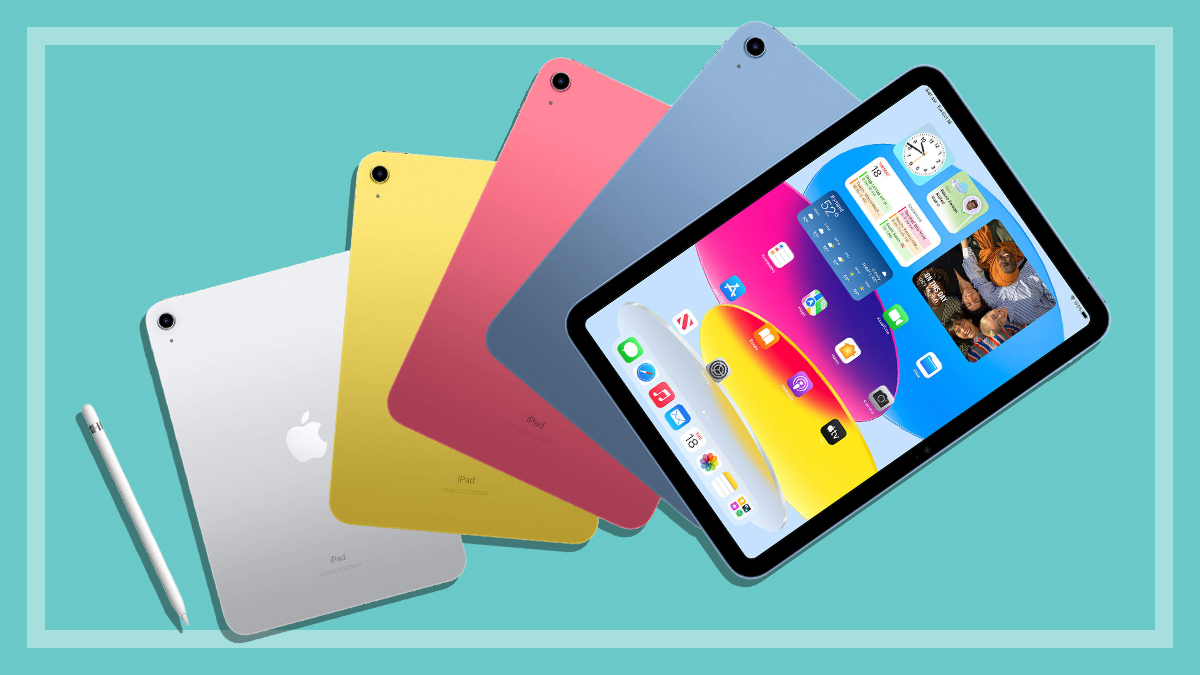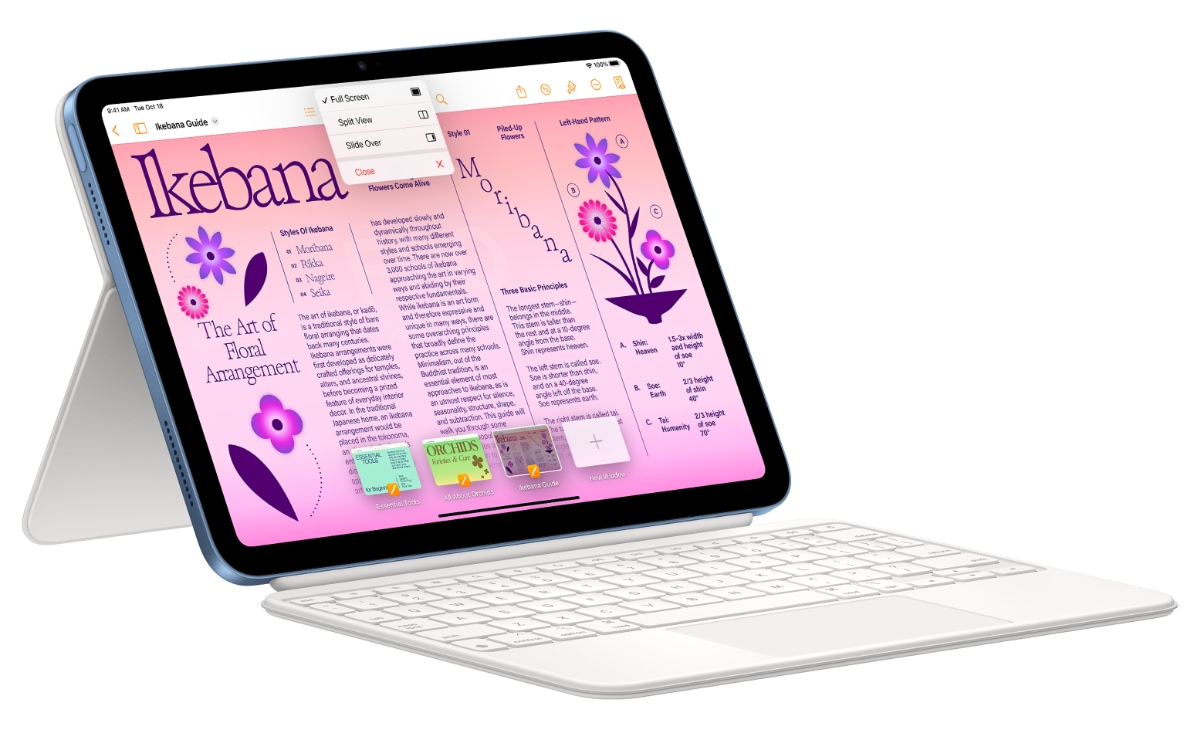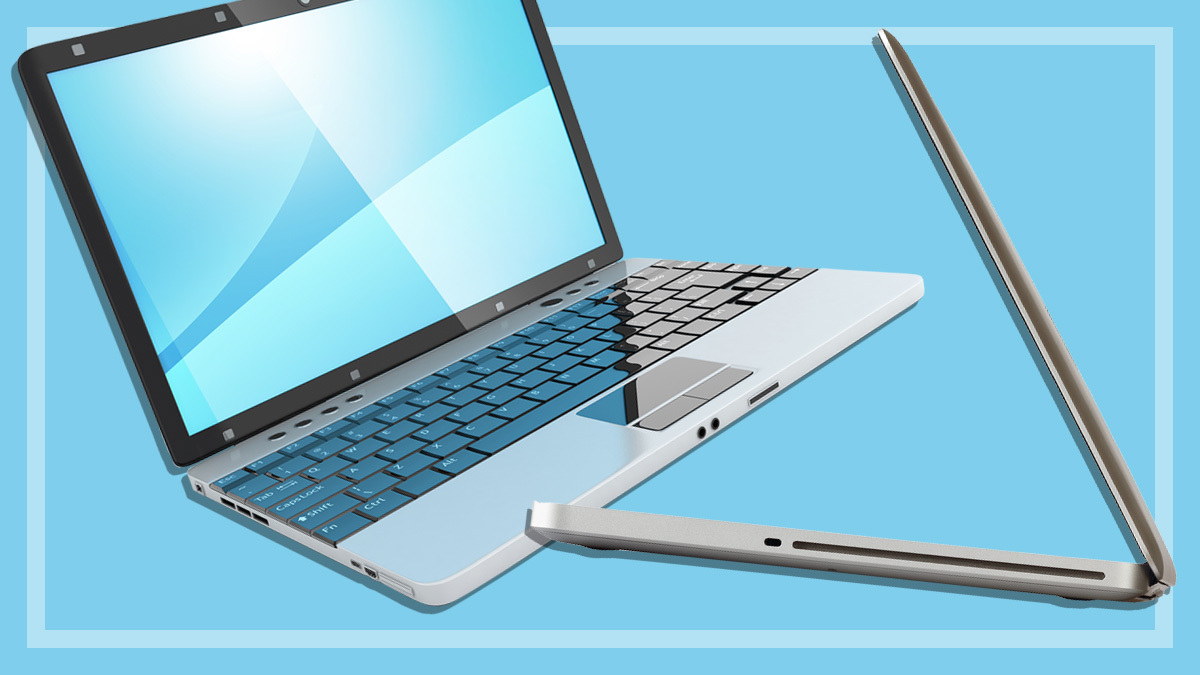Get our independent lab tests, expert reviews and honest advice.
Apple iPad 10 review

CHOICE verdict
Apple’s new iPad 10 is an addition to the Apple tablet family rather than a replacement. It sits just above the lower-cost ‘everyman’ iPad 9, which Apple has kept in the line-up as the budget option, but under the more powerful M1-equipped iPad Air. The iPad 10 looks like the Air, but still has features in common with the iPad 9, plus some unique additions. The home button with fingerprint reader has moved to the edge, as on the iPad Air. Meanwhile the Lightning connection port has been replaced by USB-C and the front-facing camera has moved to the long edge, but the iPad 10 still uses the first-generation Apple Pencil, so there’s a new adapter required. There’s a decent speed bump over the iPad 9 and a slightly larger 10.9-inch screen, and this iPad also gets its own unique new keyboard. You’ll need to compare features and pricing carefully to see if this hybrid model is for you.
Price: From $749
Contact:
apple.com/au/ipadWe tried out the iPad 10 256GB model courtesy of Apple and found it a step up from the iPad 9, with some nice new features but also some compromises.
Outwardly, the iPad 10 looks just like the more expensive iPad Air, with a 10.9-inch Liquid Retina screen, slimmer screen borders all-round and no front-facing Home button. Power and Touch ID fingerprint reader are located on the top edge, as with the iPad Air and iPad mini.
Also like the iPad Air, the connection port has been changed to USB-C, making it compatible with a wide range of USB-C devices, including native support for external screens up to 4K (at 30Hz), or 1080p at 60Hz.
With this model, Apple has leaned into the idea that people mostly use the iPad with a keyboard
However, like the iPad 9, the iPad 10 uses the original design, first-generation Apple Pencil which has a Lightning connector. So you’ll need the new USB-C to Apple Pencil Adapter.
If you buy a new 1st-gen Apple Pencil ($159), the adapter is included in the box. If you already have a 1st-gen Apple Pencil, you just need to buy the adapter separately for $15.

Landscape focus
With this model, Apple seems to have leaned into the idea that people mostly use the iPad with a keyboard.
The front-facing FaceTime camera has been moved from the short edge to the long edge of the iPad, making it much better for video conferencing when in landscape mode, along with dual microphones. The stereo speakers are also more useful in landscape orientation and support Apple’s Spatial Audio for surround-sound effect.
However, it’s likely the moving of the camera to the long edge – a first for any iPad – is a contributing factor to the decision to keep the 1st-gen Apple Pencil around, rather than the 2nd-gen Apple Pencil which attaches magnetically to the side of the iPad Air, iPad mini and iPad Pro to pair and charge automatically.
The opposite long edge of the iPad 10 has Apple’s Smart Connector for attaching the new Magic Keyboard Folio.
iPad 10 gets a speed boost, bigger screen, better cameras, USB-C, Wi-Fi 6, 5G and a new keyboard
Both front and back cameras are now 12 megapixel (MP). The front is Ultra Wide and the rear camera is Wide and handles 4K video and 240fps slow motion video. This is a jump up from the iPad 9’s 8MP rear camera and 1080p video.
As you’d expect, the iPad 10 gets a speed boost, moving to Apple’s A14 Bionic chip, a generation up from the iPad 9’s A13 Bionic, though still a model under the iPad Mini’s A15 Bionic chip.
The iPad 10 also gets Wi-Fi 6 (802.11ax) with simultaneous dual-band (2.4GHz and 5GHz) and 5G (sub-6GHz) capability for cellular models.
Its 10.9-inch Liquid Retina display screen is larger and higher resolution than the iPad 9’s 10.2-inch Retina display, and the iPad 10 has 2360 x 1640 pixels, versus the iPad 9’s 2160 x 1620 pixels. Both are rated at 500nits brightness, and neither are a fully laminated screen (like on the pricier models), but these are not the ‘pro’ models and we didn’t find it a problem and expect that most people who buy this level of iPad won’t have a problem either.
New design keyboard
The Magic Keyboard Folio ($399) is a new keyboard option, unique to the iPad 10. This white assembly comes in two pieces – a protective magnetically-attached back with adjustable support stand, and a detachable keyboard with a built-in trackpad that’s a good size.
This new keyboard includes the welcome addition of a 14-key function row, which you don’t get on Apple’s other keyboards. The top row includes 12 function keys, an escape key, and a screen lock key.
The two-piece design is versatile. You can use the support-stand backing without the keyboard attached, which can be ideal for propping it up for watching video content. Overall we found the new keyboard a pleasure to use, but unfortunately it doesn’t include backlighting, which can be annoying in low-light situations.
The Magic Keyboard Folio connects magnetically via the Smart Connector, so it doesn’t require pairing or charging. Just click it on and go. If you don’t want a keyboard, a Smart Folio offers front/back protection for $129.
Crunch the numbers before buying
Check your budget and crunch some numbers to choose which iPad to buy. The iPad 10 comes in blue, pink, silver or yellow and starts at $749 for the 64GB Wi-Fi only model or $999 for 256GB storage.
The 64GB model with Wi-Fi and cellular is $999 or $1249 for the 256GB model. All come with a USB-C charge cable and 20W USB-C power adapter.
For comparison, the ‘budget model’ iPad 9 had a price rise in 2022 and now starts at $549 for 64GB Wi-Fi only and $799 for 256GB. Wi-Fi and cellular models are $779 for 64GB and $1029 for 256GB.






